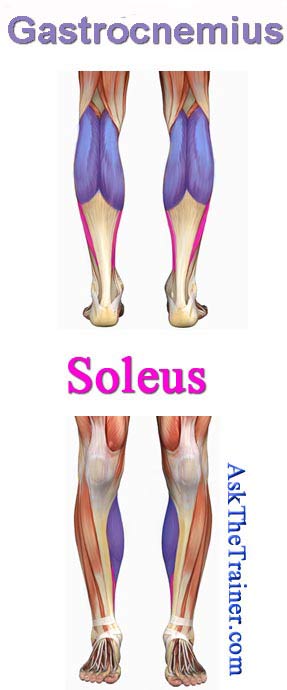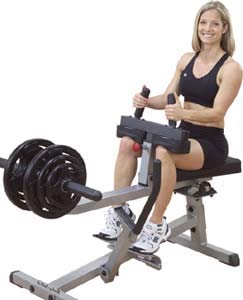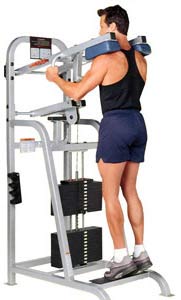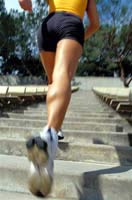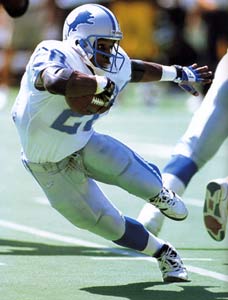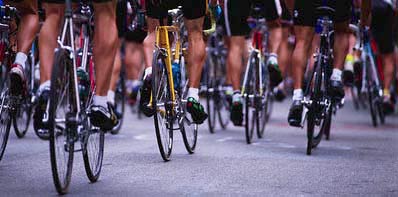Calcium and calcium supplements: Achieving the right balance
If your diet is light on calcium, calcium supplements can help you meet the new daily recommendations. Get the scoop on choosing a calcium supplement.
By Mayo Clinic staff
Calcium is important for optimal bone health throughout your life. The Institute of Medicine recently updated the recommended daily allowance (RDA) for calcium and vitamin D. Does your diet deliver?
Although diet is the best way to get calcium, calcium supplements are an option if your diet falls short. Before
you consider calcium supplements, though, be sure you understand how much calcium you need, the pros and cons of calcium supplements, and which type of calcium supplement to choose.
The benefits of calcium
Your body needs calcium to build and maintain strong bones. If your body lacks sufficient calcium over many years, you could face health problems related to weaker bones:
- Children may not reach their full potential adult height.
- Adults may have more bone fractures.
- The risk of osteoporosis increases.
Some research studies have suggested that calcium, along with vitamin D, may have benefits beyond bone health, perhaps protecting against cancer, diabetes and high blood pressure. But definitive evidence about such health benefits is lacking.
Calcium requirements
How much calcium you need depends on your age and sex. Note that the upper limit in the chart represents the safe boundary — it's not how much you should aim to get. If you exceed the upper limit, you increase your risk of health problems related to excessive calcium.
| Recommended Dietary Allowance (RDA) for calcium for adults |
|---|
| Men, age in years | RDA each day, in milligrams (mg) | Upper limit each day, in milligrams (mg) |
| 19-50 | 1,000 | 2,500 |
| 51-70 | 1,000 | 2,000 |
| 71 and older | 1,200 | 2,000 |
| Women, age in years | | |
| 19-50 | 1,000 | 2,500 |
| 51 and older | 1,200 | 2,000 |
| Pregnant women, age in years | | |
| 19-50 | 1,000 | 2,500 |
| Breast-feeding women, age in years | | |
| 19-50 | 1,000 | 2,500 |
Source: Institute of Medicine, 2010
Calcium and diet
Your body doesn't produce calcium, so you must get it through other sources. Calcium can be found in a variety of foods, including:
- Dairy products, such as cheese, milk and yogurt
- Dark green leafy vegetables, such as broccoli and kale
- Fish with soft bones that you can eat, such as sardines and canned salmon
- Calcium-fortified foods and beverages, such as soy products, cereal and fruit juices
In general, one serving of each of these calcium-rich foods provides about 300 to 400 milligrams (mg) of calcium, or about one-third of the RDA.
Even if you eat a healthy, balanced diet, you may find it difficult to get enough calcium if you:
- Follow a vegan diet
- Have lactose intolerance, because you may limit dairy products
- Consume large amounts of protein or sodium, which can cause your body to excrete calcium
- Have osteoporosis
- Have osteopenia
- Are receiving long-term treatment with corticosteroids
- Have certain bowel or digestive diseases that decrease your ability to absorb calcium, such as inflammatory bowel disease and celiac disease
In these situations, calcium supplements may help you meet your calcium requirements.
Types of calcium supplements
With the wide range of calcium supplements available in different doses, preparations and combinations, choosing one can be confusing. What's best for you depends largely on your needs and preferences, including any medical conditions you have or medications you take. There's not one best type of calcium supplement for everyone.
The mineral calcium — often referred to as elemental calcium — exists naturally along with other substances, called compounds. Several different kinds of calcium compounds are used in calcium supplements. Each compound contains varying amounts of elemental calcium. Common calcium supplements may be labeled as:
- Calcium carbonate (40 percent elemental calcium)
- Calcium citrate (21 percent elemental calcium)
- Calcium gluconate (9 percent elemental calcium)
- Calcium lactate (13 percent elemental calcium)
In addition, some calcium supplements are combined with vitamins and other minerals. For instance, some calcium supplements may also contain vitamin D or magnesium. Check the ingredient list to see which form of calcium your calcium supplement is and what other nutrients it may contain. This information is important if you have any health or dietary concerns.
Choosing calcium supplements
To determine which calcium supplement may be best for you, consider these factors:
Amount of elemental calciumElemental calcium is key because it's the actual amount of calcium in the supplement. It's what your body absorbs for bone growth and other health benefits. The Supplement Facts label on calcium supplements is helpful in determining how much calcium is in one serving. Some will list the milligrams of calcium in one serving. Others will list only the Percent Daily Value. If only the Percent Daily Value is listed, you can determine how many milligrams of calcium are in one serving by multiplying the Percent Daily Value in one serving by 1,000 milligrams.
For example, if the label shows that two tablets make up one serving and provide 60 percent of the Percent Daily Value, multiply 60 percent by 1,000 (0.60 x 1,000), which equals 600 milligrams of calcium for two tablets. Each tablet, then, would have 300 milligrams of calcium.
Be sure to note the serving size (number of tablets) when determining how much calcium is in one serving. And don't confuse the weight of the serving size with the amount of calcium. The weight of the serving size is the weight of the elemental calcium and the compound it's combined with.
TolerabilityCalcium supplements cause few, if any, side effects. But side effects can sometimes occur, including gas, constipation and bloating. In general, calcium carbonate is the most constipating. You may need to try a few different brands or types of calcium supplements to find one that you tolerate the best.
What prescriptions you takeCalcium supplements can interact with many different prescription medications, including blood pressure medications, synthetic thyroid hormones, bisphosphonates, antibiotics and calcium channel blockers. Ask your doctor or pharmacist about possible interactions and which type of calcium supplement would work for you.
Quality and costLook for "USP" or "CL" on the calcium supplement label. Supplements that bear the United States Pharmacopeia (USP) or ConsumerLab.com (CL) abbreviation meet voluntary industry standards for quality, purity, and tablet disintegration or dissolution. Different types of calcium supplements have different costs. Comparison shop if cost is a factor for you.
AbsorbabilityYour body must be able to absorb the calcium for it to be effective. Chewable and liquid calcium supplements are absorbed most readily. The USP or CL abbreviation on the label also is an indication of better absorbability. To aid absorption, some types of calcium supplements should be taken with food, while for other types it may not matter.
Supplement formsCalcium supplements are available in a variety of forms, including tablets, capsules, chews, liquids and powders. If you have trouble swallowing pills, you may want a chew or liquid calcium supplement.
Possible link to heart diseaseIt's not definitive but there may be a link between certain calcium supplements and heart disease. The calcium supplements of concern are those that contain only calcium — not supplements that combine calcium and vitamin D or multivitamin supplements with calcium. It's thought that the calcium in some supplements could make its way into fatty plaques in your arteries, causing those plaques to harden and increasing your risk of heart attack.
Timing matters: When to take calcium supplements
In general, you can take calcium supplements at any time of day. But there are special circumstances that may affect when you should take calcium supplements.
- Dosage. Calcium is absorbed most efficiently when it's taken in amounts of 500 or 600 mg or less at one time. So if you take 1,000 mg of calcium a day, split it into two or more doses over the course of the day.
- Other supplements. Calcium can affect or be affected by other supplements. If you also take an iron supplement, for instance, don't take it at the same time as you take calcium. Check with your doctor, pharmacist or dietitian about other interactions.
- Medications. If you take prescription medications, ask your doctor or pharmacist about possible interactions with calcium supplements. You may need to take calcium supplements several hours before or after taking your medications.
- Meals and snacks. If your calcium supplements contain calcium carbonate, take them with food. The stomach acid produced when you eat helps the absorption of calcium carbonate. If your calcium supplements contain calcium citrate, you can take them with or without food.
If you're still not sure about the best time to take your calcium supplements, check with your doctor or pharmacist for guidance.
Who should skip calcium supplements?
Calcium supplements aren't for everyone. For instance, if you have a health condition that causes excess calcium in your bloodstream (hypercalcemia), you should avoid calcium supplements. If you have a history of kidney stones, or if you aren't sure if calcium supplements are appropriate for your situation, talk to your doctor.
Too much calcium has risks
Dietary calcium is generally safe, but more isn't necessarily better, and excessive calcium doesn't provide extra bone protection. In fact, if the calcium in your diet and from supplements exceeds the upper limit set by the Institute of Medicine, you could increase your risk of such health problems as:
- Kidney stones
- Prostate cancer
- Constipation
- Calcium buildup in your blood vessels
- Impaired absorption of iron and zinc
If you take calcium supplements and eat calcium-fortified foods, you may be consuming more calcium than you realize. Check your calcium supplement to see how much it contains and read food labels to help monitor your total calcium intake.
Don't forget vitamin D with your calcium
At the same time that the Institute of Medicine released its recommendations for calcium intake, they also released new recommendations for vitamin D. Vitamin D is also important for bone health and helps your body absorb calcium. Some calcium supplements contain vitamin D. A few foods naturally contain small mounts of vitamin D, such as canned salmon with bones, and egg yolks. You can also get vitamin D through fortified foods or even sun exposure.
| Recommended Dietary Allowance (RDA) for vitamin D for adults |
|---|
| Men, age in years | RDA each day, in international units (IU) | Upper limit each day, in international units (IU) |
| 19-70 | 600 | 4,000 |
| 71 and older | 800 | 4,000 |
| Women, age in years | | |
| 19-70 | 600 | 4,000 |
| 71 and older | 800 | 4,000 |
Source: Institute of Medicine, 2010
http://www.mayoclinic.com/health/calcium-supplements/MY01540
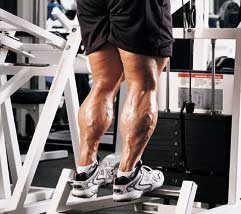 What you’ve Heard is All Wrong! Learn the Exercises that Really Train your Calves!
What you’ve Heard is All Wrong! Learn the Exercises that Really Train your Calves!